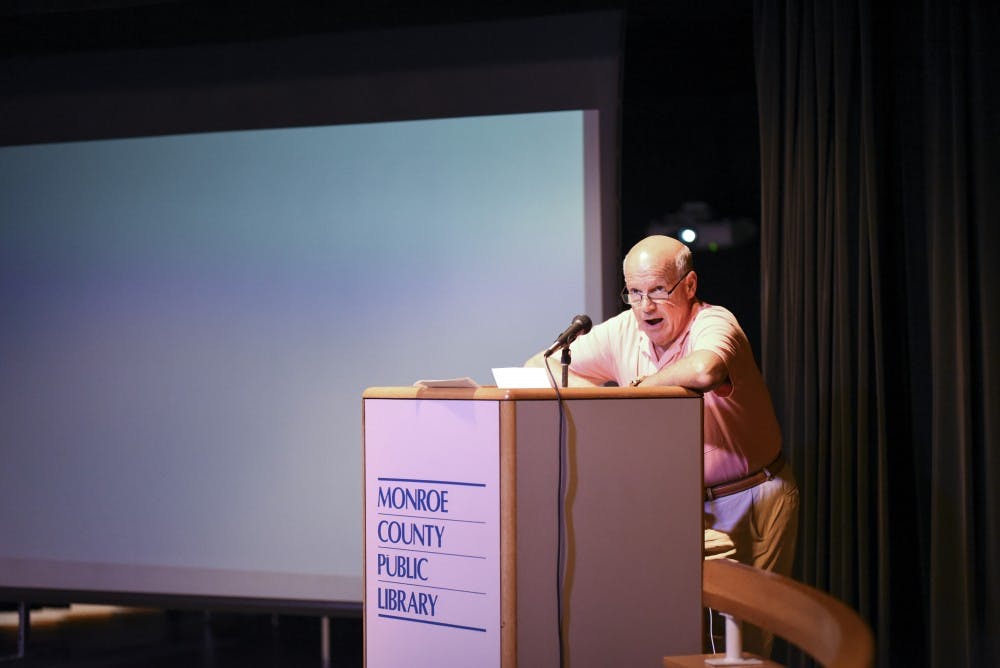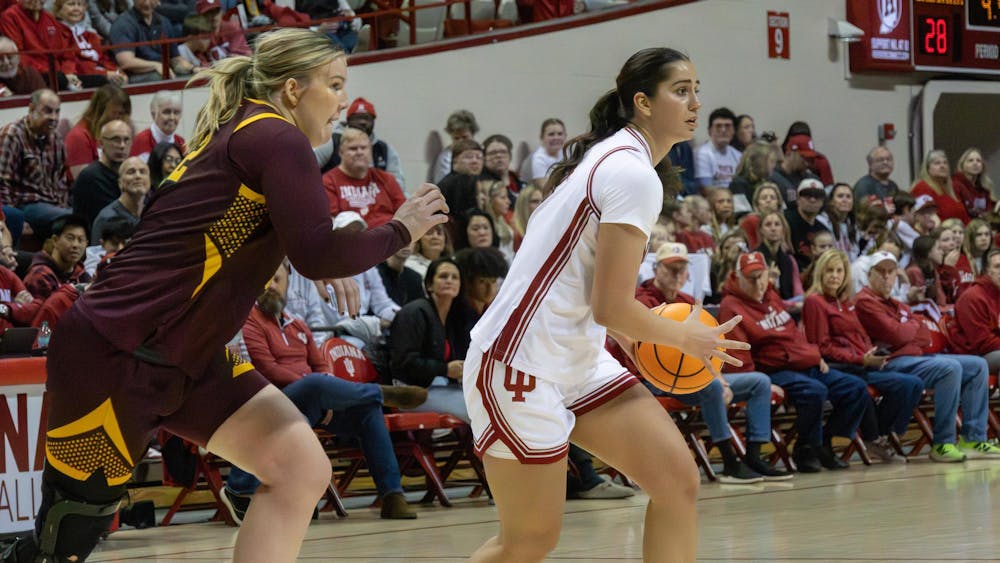When people see large Confederate monuments like the statue of Robert E. Lee in Charlottesville, they don’t see the whole story, IU history professor John Bodnar said.
“These are not monuments to history,” Bodnar said. “The monuments become myths.”
Four IU history professors took part in Monuments, Memory and Meaning after Charlottesville, a discussion Monday evening at Monroe County Public Library. Panelists spoke about monuments and memorials across the globe and whether or not removing them was the correct action to take.
Bodnar said the figures and events that monuments symbolize can glorify history because they do not depict the grief associated with the era they represent. Some of these memorials erase the trauma that would inspire the need to ask questions about the causes and the consequences of those events.
The Lee monument evoked themes of mourning when a black tarp was thrown over the monument's pedestal for Heather Heyer, who died during the August protests against removal of Robert E. Lee's statue in Charlottesville, Virginia, Bodnar said.
Professor of history Maria Bucur said the first thing to do with monuments of figures like the Lee statue would be to pull them off their pedestals in order to lessen their glorification, but getting rid of the statues was not the answer. She suggested they be moved more to places such as museums.
“They should be in a little island of discarded toys, surrounded by other monuments of ideals people like Robert E. Lee may have disagreed with,” Bucur said.
History professor Edward Linenthal spoke about how the monuments, once erected in celebration, have become part of bitter controversies. National parks have stopped selling products branded with the Confederate flag symbol due to recent protests in Charlottesville, Virginia, and other parts of the nation, Linenthal said.
“The question becomes, where do Confederate flags belong in public?” said Linenthal. “Nothing about this process of deciding where this monuments belong should or will be easy.”
Linenthal said memorials and monuments are supposed to caution and remind citizens of what has occurred, whether it be a massacre or a war. In other cases he said they can even be therapeutic.
Linenthal said the idea of removing every Confederate monument from every Civil War battlefield is wrong, but when monuments become toxic in a community, there should be a discussion on what to do with them.
“Monuments are a part of history,” Linenthal said. “They say a lot about what we thought about history at the time.”
Simply removing the monuments isn’t enough, Bucur said. As an example, she explained how in Romania public statues of fascist leaders such as Ion Antonescu were torn down.
While Bucur said the removal was good thing, she wished there would have been new memorials added to remember those who suffered under the fascist regime.
“Removal of monuments is not sufficient,” Bucur said. “They need to also be replaced.”






